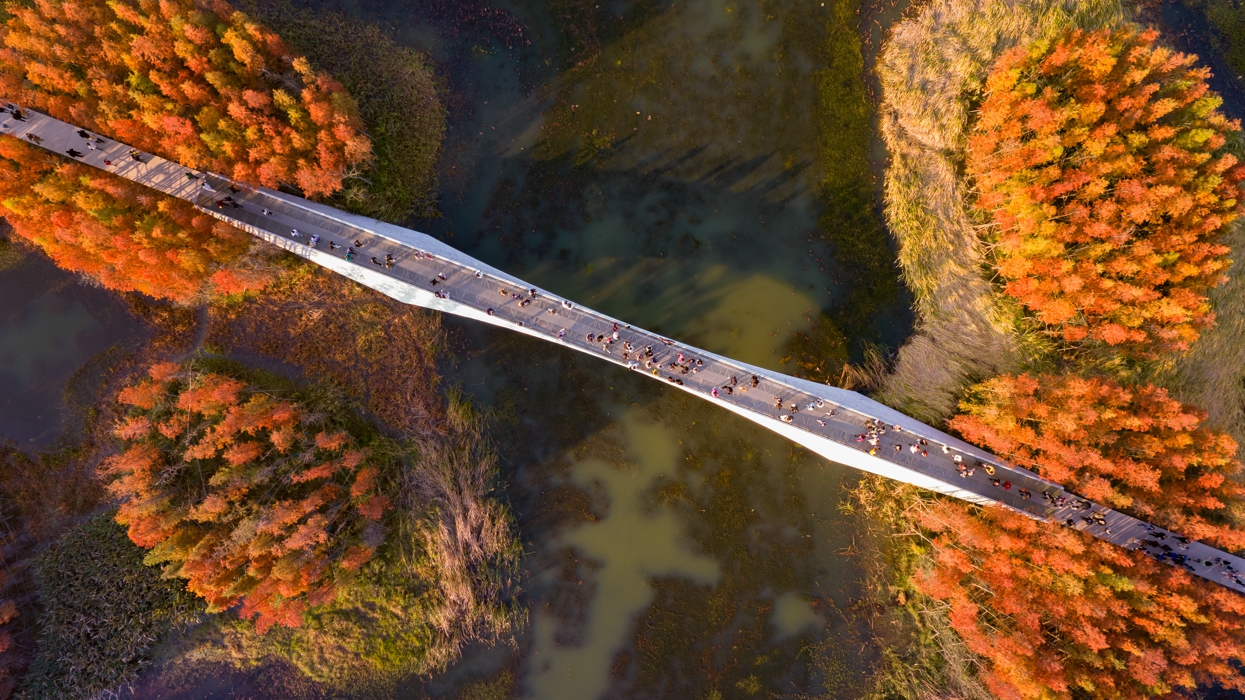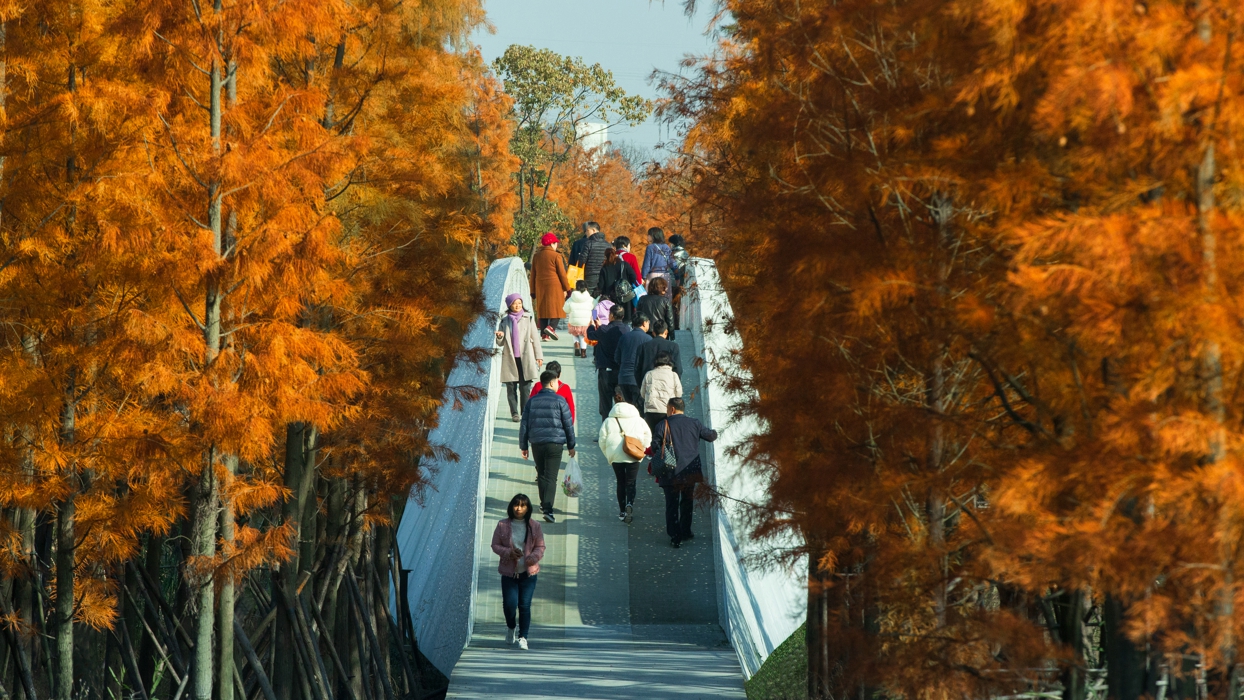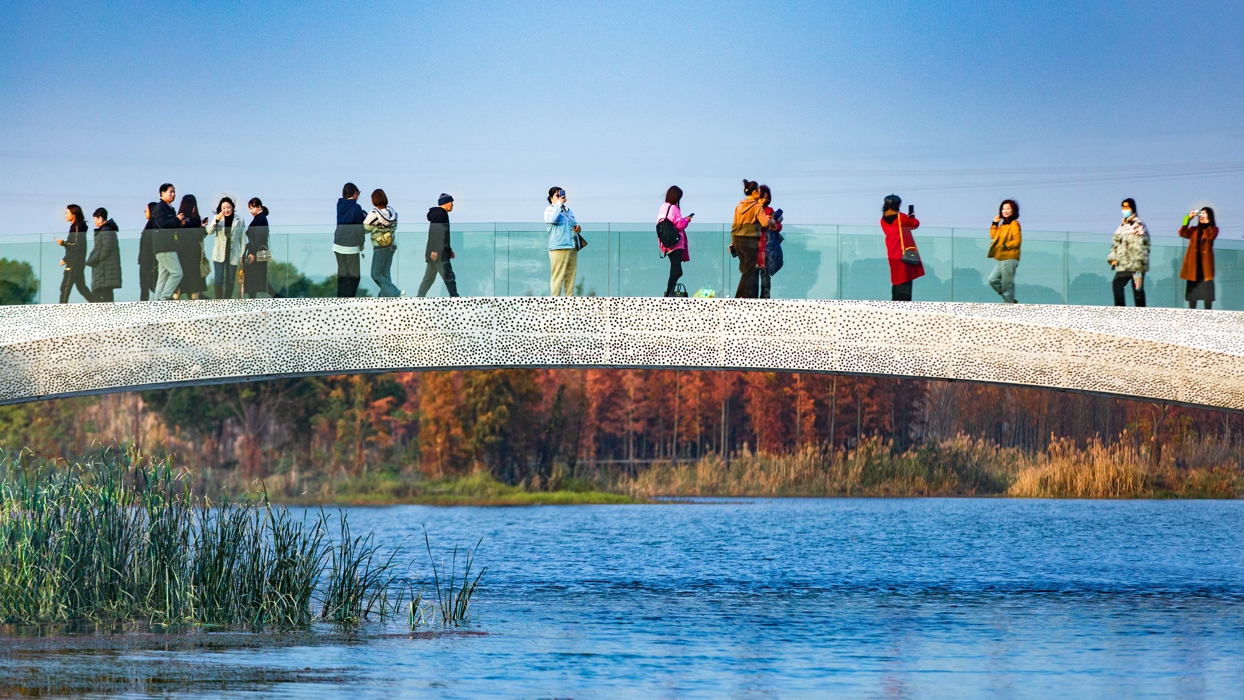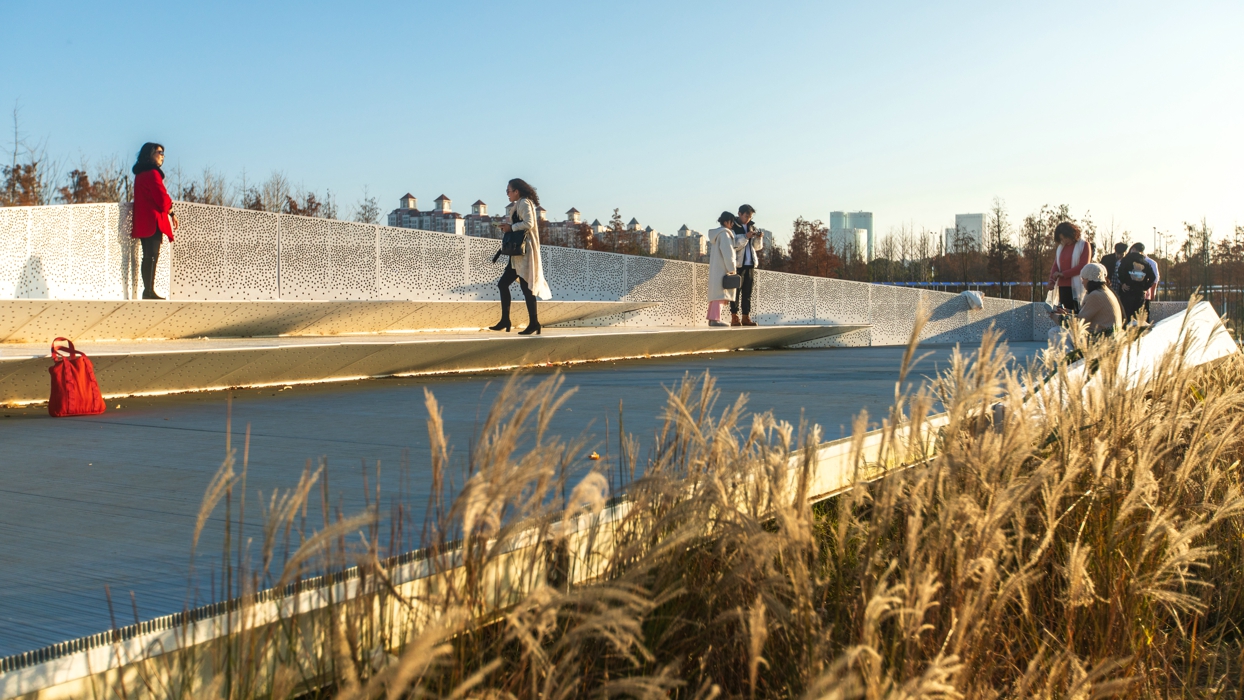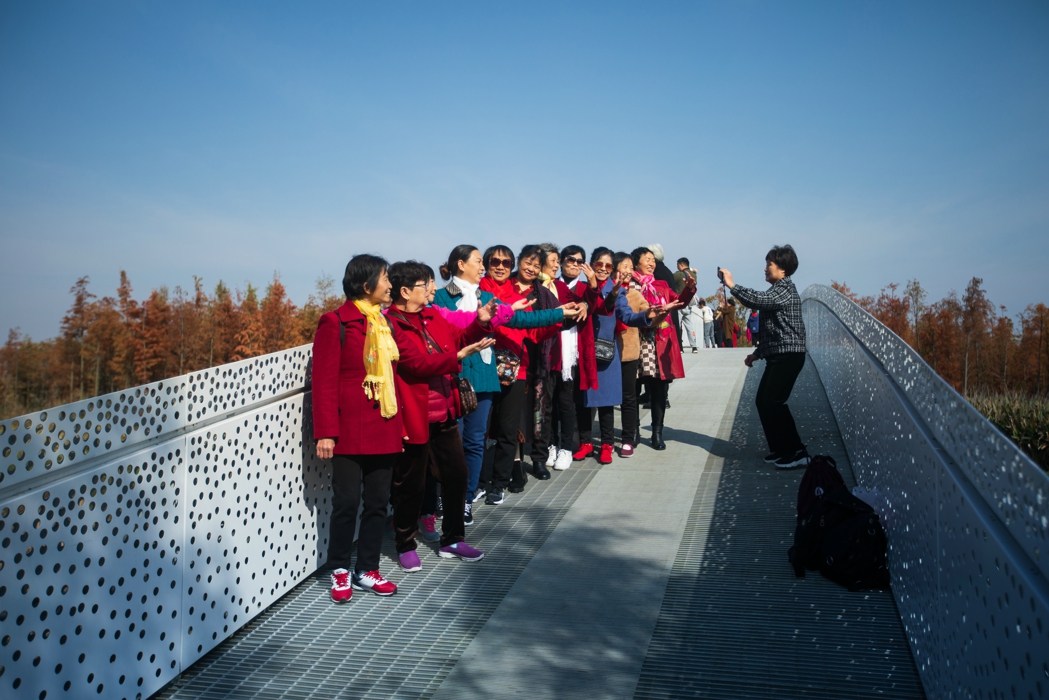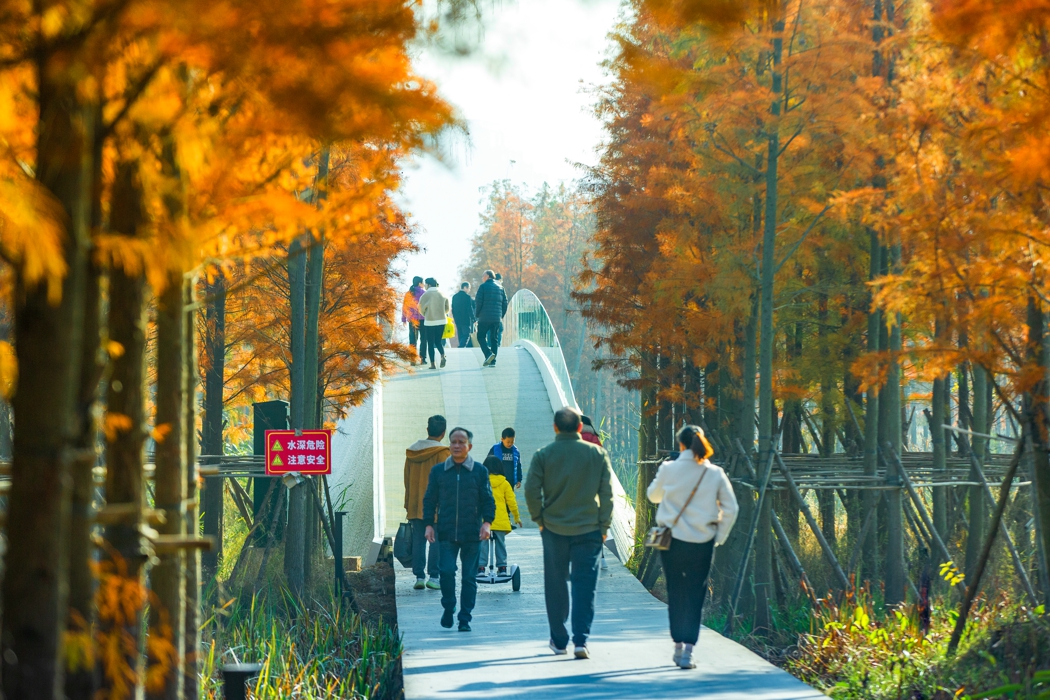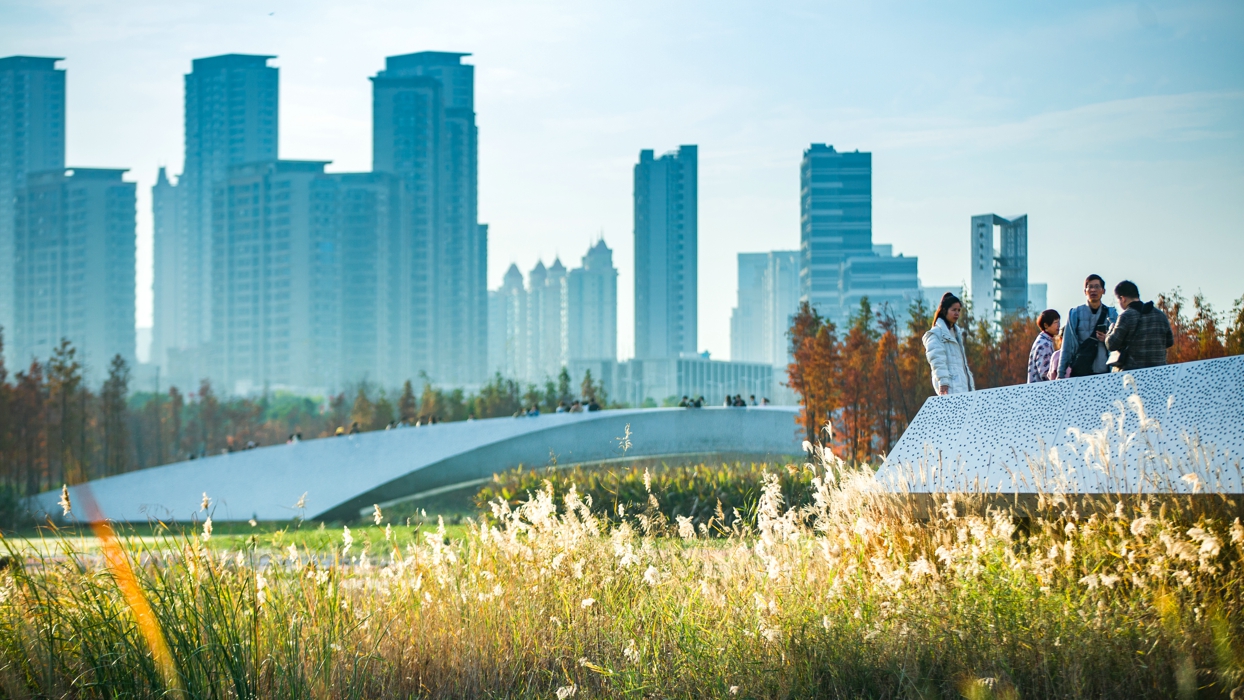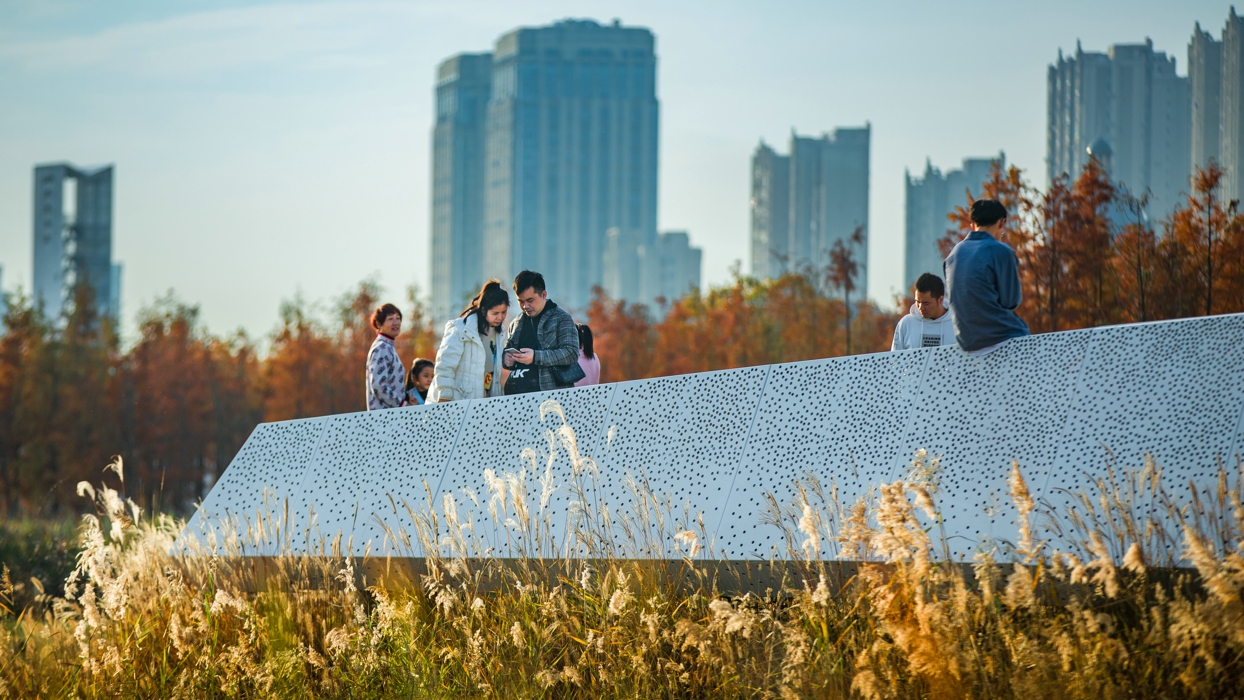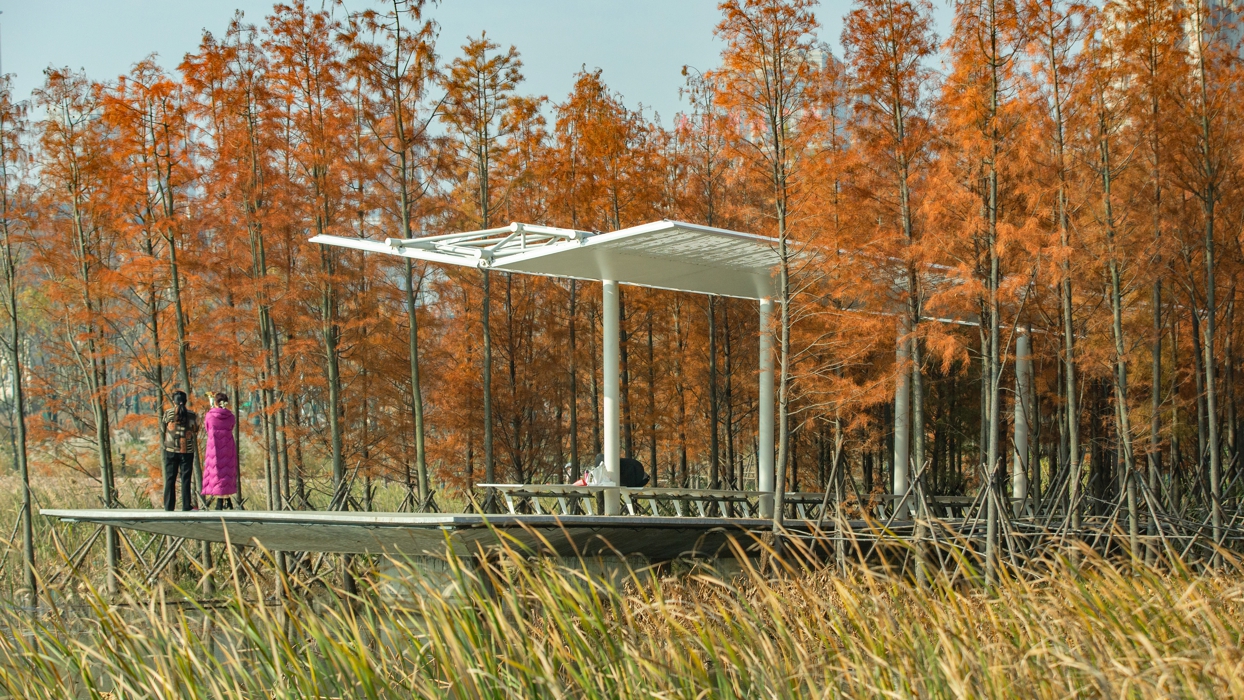Nanchang Fish Tail Park Landscape Bridge
Project Information
- Project Location:
- China Nanchang, Jiangxi
- Project Scale:
- 75.4m
- Design Time:
- May 2019
- Build Time:
- May 2021
- Award List:
- 2025 ASLA Award of Excellence General Design, 2022 AZ Awards Landscape Architecture Winner, 2022 AZ Awards People's Choice Environmental Leadership,2022 Architecture MasterPrize Design of the Year,2022 Fortune Best Designs
- Related Papers
Project Profile
The project is located in Nanchang, Jiangxi Province—a city founded in 202 BC and one of the first National Historic and Cultural Cities designated by the State Council. Nanchang was praised in the famous Preface to the Pavilion of Prince Teng as “a land of natural treasures and outstanding people.” The site, originally planned as a migratory bird corridor within the Aixi Lake green belt in the High-Tech Zone, was degraded by fragmented, abandoned fishponds and large-scale fly ash wastelands due to uncontrolled urban expansion. In response, the design adopted an overall strategic framework based on thorough analysis of the site’s characteristics, resource advantages, and developmental challenges. It proposed three core strategies: ecological restoration, embedded design, and sustainable development. These strategies aim to restore natural ecosystems while meeting the public's needs for recreation and sightseeing, ultimately creating a resilient, multifunctional landscape.
The wetland landscape bridge is a medium-sized bridge with a total length of 75.4 meters and a main span of 36 meters. As part of Yuweizhou Wetland Park's vision to create a waterborne forest landscape, the bridge serves as the only passage connecting the park’s forested “star islands” and plays a key role in the park’s overall layout. The single-span arched structure stretches across the water, connecting to the boardwalks on both sides. A central clearance is reserved beneath the arch for future maintenance. Taking advantage of steel’s lightweight and long-span capabilities, the bridge achieves an elegant, efficient crossing. Its exterior is clad in perforated aluminum panels, providing a visually unified and contemporary form that harmonizes with the surrounding wetland landscape.
Inspired by the concept of reflecting the starry sky on water, the bridge uses a steel structure clad in perforated aluminum panels, with integrated lighting on the inside to evoke a celestial ambiance. Around the park, a network of bike paths, waterfront trails, and shaded walkways connects the islands, inviting visitors to explore the hidden beauty of the wetland. Carefully placed bridges, platforms, pavilions, and viewing towers create key focal points of attraction. The modern design language injects contemporary aesthetic confidence into this ancient city of over two millennia. The strong contrast between the industrial materiality of the perforated aluminum panels and the natural setting forms a compelling dialogue between the artificial and the organic.
